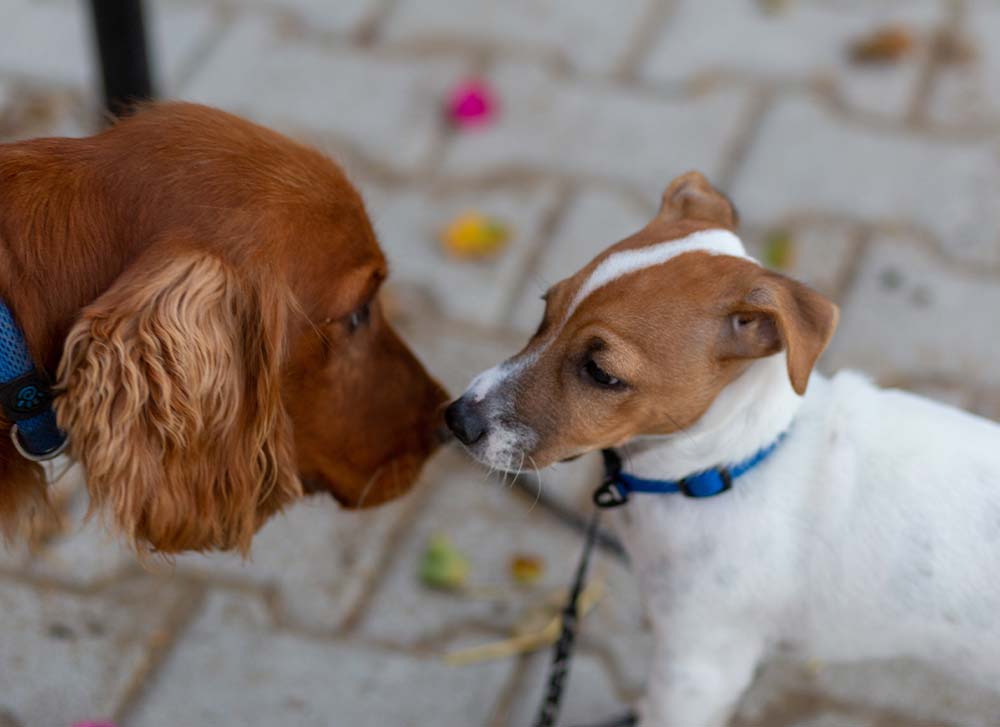I’ve raised two dogs from puppyhood, while the rest I’ve adopted or fostered as young adults or seniors. The joy of having a companion animal can be so rewarding, but it also comes with its challenges and stresses, regardless of the age when they become part of your family. It can be even more challenging when you have other dogs in the home. It’s crucial to remember to be patient – both with yourself and your new family member.
There are things you can do to set both your pet(s) and yourself up for success.
Allow Time to Settle In
Providing a designated space for your new dog upon joining your family is essential. Utilizing gates, kennels, or X-pens creates a safe area for your dog to decompress and acclimate to the new environment during the initial days. This setup also enables any other pets to adjust to the presence of a newcomer in the household. While it’s natural to want to introduce your new dog to friends and family, such introductions can be overwhelming for a dog suddenly thrust into unfamiliar surroundings, regardless of age or background. I recommend minimizing new stimuli during this period to allow your dog to gradually adjust to your routine.
Manage Pet-to-Pet Introductions and Create Safe Spaces
When introducing your new dog to your other dogs it’s crucial to proceed one at a time. Consider how overwhelming it would be if you were at a party and everyone rushed to greet you simultaneously. Dogs can feel overwhelmed too, so taking it slow with introductions sets both parties up for success. The primary goal during this phase is to build trust. Begin with short parallel walks, allowing enough space for both dogs to feel comfortable. If these walks go well, transition to the backyard (if fenced) with dropped leashes. If you don’t have a fenced yard, using long lines in a park can also be effective. Look for relaxed postures and give-and-take interactions between the dogs, such as sniffing and respecting each other’s space.
Introductions are best managed with two people present to intervene quickly if the dogs show signs of discomfort. When moving the introductions indoors, ensure all toys, treats, and bones are removed initially to prevent conflicts. If you’re bringing a new puppy into the mix, it’s important to allow your older dog to escape the puppy antics as needed. X-pens can be a helpful tool to keep your puppy nearby while providing relief from their energy and sharp puppy teeth! Supervision is essential during all interactions between pets during this transition stage.
Create Solo Time with Each Dog
When a new dog joins the family, your other dog(s) might perceive competition for a valuable resource, such as time with you. However, there are several strategies to help ease this transition. Engaging in solo walks, play sessions, or short training sessions are simple yet effective ways to continue bonding with each dog during this period of adjustment.
Begin Training
Simple training can begin as soon as you welcome your new dog home to establish the expected behaviors. After a few weeks, and depending on your dog’s adjustment, you can introduce a more structured training approach. Numerous options, including group classes or private coaching, are available to help you teach your dog behaviors that result in rewards such as attention, treats, or access to outside areas.
Time, patience, and effective management are crucial when integrating a new dog into your household. It’s essential to maintain realistic expectations and refrain from comparing your new dog to prior pets. Focus on training the dog in front of you and remember to take a deep breath! With patience, your new dog will become a valued companion and family member in no time!



